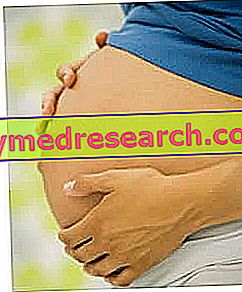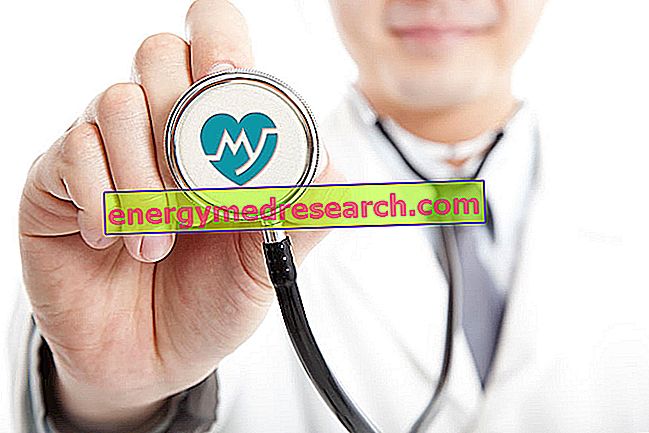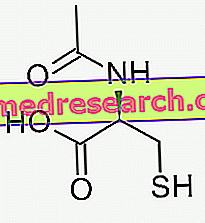So is anemia
Anemia is defined as a reduction in the ability of blood to carry oxygen.

Anemia in Pregnancy
Anemia is the most common haematological disorder that can occur during a pregnancy, basically in response to a physiological mechanism . In fact, during pregnancy, the body goes through significant changes; among these, the plasma volume increases progressively to address the metabolic needs of the mother and fetus. Due to the increase in the plasma component of the blood, the hematocrit is "diluted" and therefore has slightly lower values. This physiological process is called haemodilution .
During pregnancy, the amount of blood in the maternal body increases to support the growth of the unborn child; as a result, the need for iron and other nutrients used in the synthesis of hemoglobin and red blood cells is also increasing. Gestational anemia is generally mild and does not affect good pregnancy (this is also referred to as "physiological anemia"). However, in the presence of nutritional deficiencies and the body's reserves not sufficient to cover the needs of both the mother and the fetus, the organism may not produce a quantity of erythrocytes proportional to the expansion of the plasma volume.
Gestational anemia is associated with a sense of constant fatigue and wheezing, which also appear without effort. In severe cases, anemia can interfere with oxygenation of the unborn child. Other signs and symptoms may include pallor, tachycardia and hypotension (low blood pressure). If anemia is significant and untreated, the risk of preterm delivery and postpartum maternal infections increases. Anemia occurs mainly in the second and third trimesters and the most common causes are iron and folate deficiency. For this series of reasons, future mothers are recommended to undergo anemia checks at least twice during pregnancy: during the first prenatal examination and between the 24th and 28th week of gestation.
Types of gestational anemia
Different types of anemia can occur during pregnancy:
- Iron deficiency anemia;
- Folate deficiency anemia;
- Vitamin B12 deficiency anemia.
Iron, folic acid and vitamin B12 are required for the production and maturation of erythrocytes. A reduced dietary intake of these factors necessary for erythropoiesis can produce both a reduction in the hemoglobin content and a reduction in the number of erythrocytes in the blood. In both cases, it results in a reduction in the oxygen carrying capacity of the blood.
If the cause is a decrease in the amount of iron introduced with the diet, anemia is defined by iron deficiency, while if a reduction in the intake of vitamin B12 or folic acid is involved it is called pernicious anemia .
- Iron deficiency anemia. Iron , in particular, serves for the synthesis of hemoglobin, which is why it must be taken through nutrition in doses adequate to maintain a normal concentration of hemoglobin in the blood (in men 13-18 g / dl and in women 12-16 g / dl). The liver has a certain iron reserve and another quantity is made available by recycling from old erythrocytes destined for demolition in the spleen. Mineral deficiency decreases hemoglobin synthesis and its lower concentration is reflected in the reduced ability to transport oxygen to tissues throughout the body, through the blood. Iron deficiency is the most common cause of anemia in pregnancy and depends, usually, on an insufficient dietary intake of the mineral, or from a pregnancy close to the previous one or from the recurrent loss of iron in case of abundant menstrual flows. During pregnancy, iron deficiency has been linked to an increased risk of preterm delivery and low birth weight of the newborn .
Folic acid and vitamin B12 are instead required for DNA synthesis ; their deficiencies are reflected on all the cells of the body and their effects on hematopoiesis are more marked due to the rapidity of the production of erythrocytes.
- Folate deficiency anemia. Folic acid (or vitamin B9) is another essential nutritional component for oxygen transport and is also necessary for thymine synthesis, one of the bases of DNA. A deficiency of folic acid affects all rapidly dividing cells in the body, such as erythrocytes. During pregnancy, the intake of folic acid with the diet is sometimes not sufficient and, when this happens, the body cannot produce a sufficient amount of red blood cells for optimal transport of oxygen to the tissues. Folic acid deficiency increases the risk of fetal malformations (such as spina bifida).
- Vitamin B12 deficiency anemia. Pernicious anemia is caused by the lack of an intrinsic factor, necessary for the absorption of vitamin B12 in the intestinal tract. Vitamin B12 is necessary, like folic acid, for the synthesis of thymine and the relative deficiency determines the same characteristics of folic acid deficiency anemia. Women who do not eat meat, poultry, dairy products and eggs have a greater risk of developing vitamin B12 deficiency.
Other causes
Anemia can be induced by bleeding, so even blood loss during and after childbirth can determine this hematological condition.
Furthermore, some women may be affected by pathologies that contribute to determining gestational anemia: diseases such as sickle cell anemia or thalassemia affect the quality and the number of red blood cells that the body produces.
Risk factors for anemia in pregnancy
Some risk factors expose women to the highest chances of suffering from anemia in pregnancy; among these we remember:
- Twin or multiple pregnancy (with more than one child);
- Bad eating habits or unbalanced diet (iron deficiency, vitamins, proteins etc.);
- Short temporal distance between two pregnancies;
- Morning sickness with frequent vomiting;
- Young age of the future mother (teenager);
- Abundant menstrual flows prior to pregnancy or related to the presence of uterine fibroids;
- Smoke (reduces the absorption of essential nutrients);
- Excessive alcohol consumption (which leads to poor nutrition);
- The use of anticonvulsant drugs.
Anemia in Pregnancy - Symptoms, Diagnosis, Cure »



